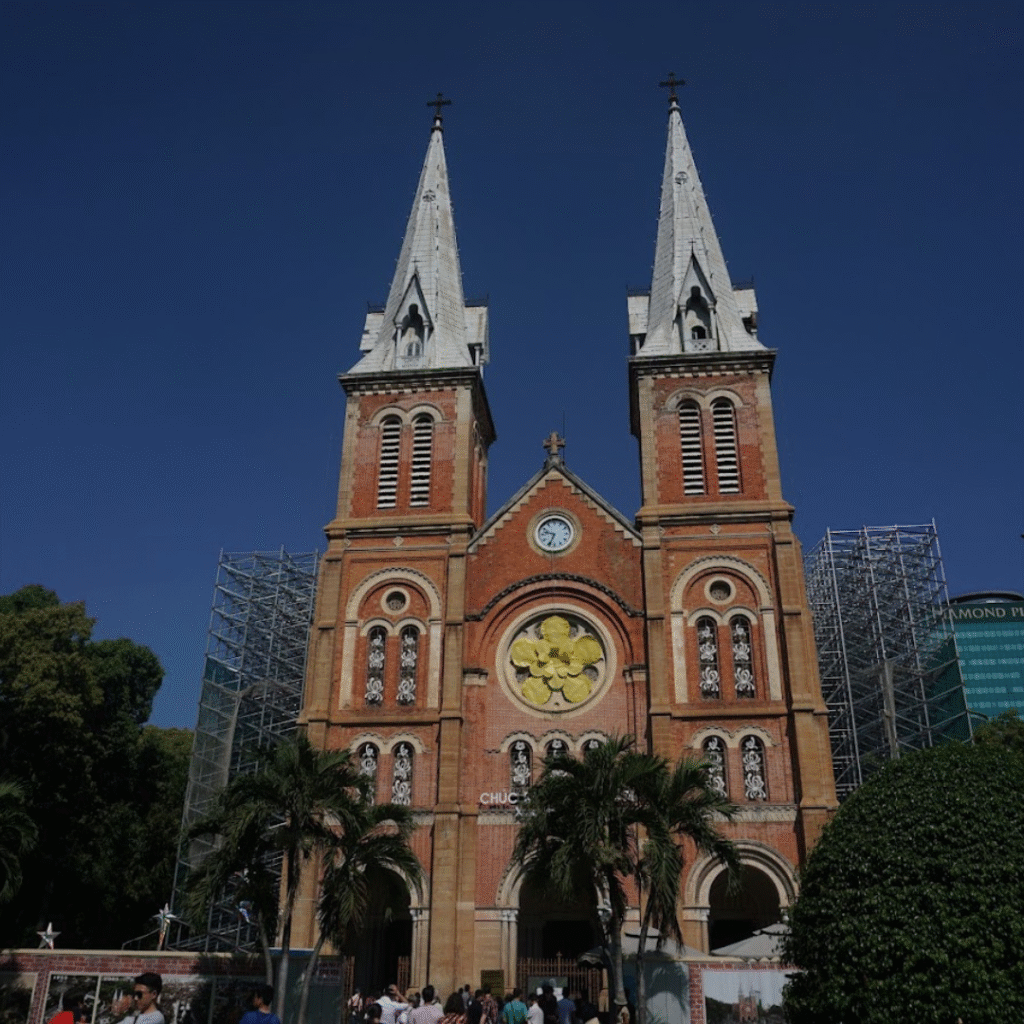
The Notre Dame Cathedral Saigon stands as a remarkable fusion of Christian symbolism and Vietanamese cultural heritage. The Cathedral’s epitome is its monumental stained glass installation that attract a diverse range of audience.
Architectural Vision and Cultural Integration
Designed by architect Dirk U. Moench of INUCE, the church addresses the dual challenge of serving a rapidly urbanizing community while preserving local traditions. Drawing inspiration from the region’s vernacular Tulou architecture, circular communal dwellings, the church’s layout features facilities arranged around a central courtyard. Therefore, fostering a sense of community and continuity with the past.
The ‘De Profundis’ Stained Glass Facade
At the heart of the church’s design is the ‘De Profundis’ stained glass facade. This is an expansive artwork comprising 107,707 individual pieces of blue-hued glass. Covering 1,412 square meters, this ranks in as the largest stained glass installation in Vietnam. Further, the installation ranks among the largest globally also.
The artwork draws its name and inspiration from Psalm 130: “Out of the depths I cry to you, O Lord,”. Additionally, the glass artwork evokes an experience of being in the ocean’s depths. This is where darkness dies by divine light from above.
Symbolism and Spiritual Experience
The deep blue tones of the stained glass create a meditative atmosphere within the sanctuary. Therefore, symbolizing the journey from despair to hope. This immersive environment will intend to offer solace and spiritual upliftment to congregants, reflecting the Christian narrative of redemption and the light of faith dispelling darkness.
Technical Mastery and Nighttime Illumination
The facade employs a double-skin design, allowing for artificial illumination between the inner and outer layers. This feature transforms the church into a luminous beacon at night, symbolizing guidance and hope to the surrounding community.
A Harmonious Blend of Tradition and Modernity
The Notre Dame Cathedral Saigon exemplifies how contemporary architecture can honor traditional aesthetics while addressing modern communal needs. Its stained glass facade not only serves as an artistic centerpiece but also embodies the church’s mission to be a place of refuge and spiritual enlightenment amidst the challenges of rapid urbanization.
